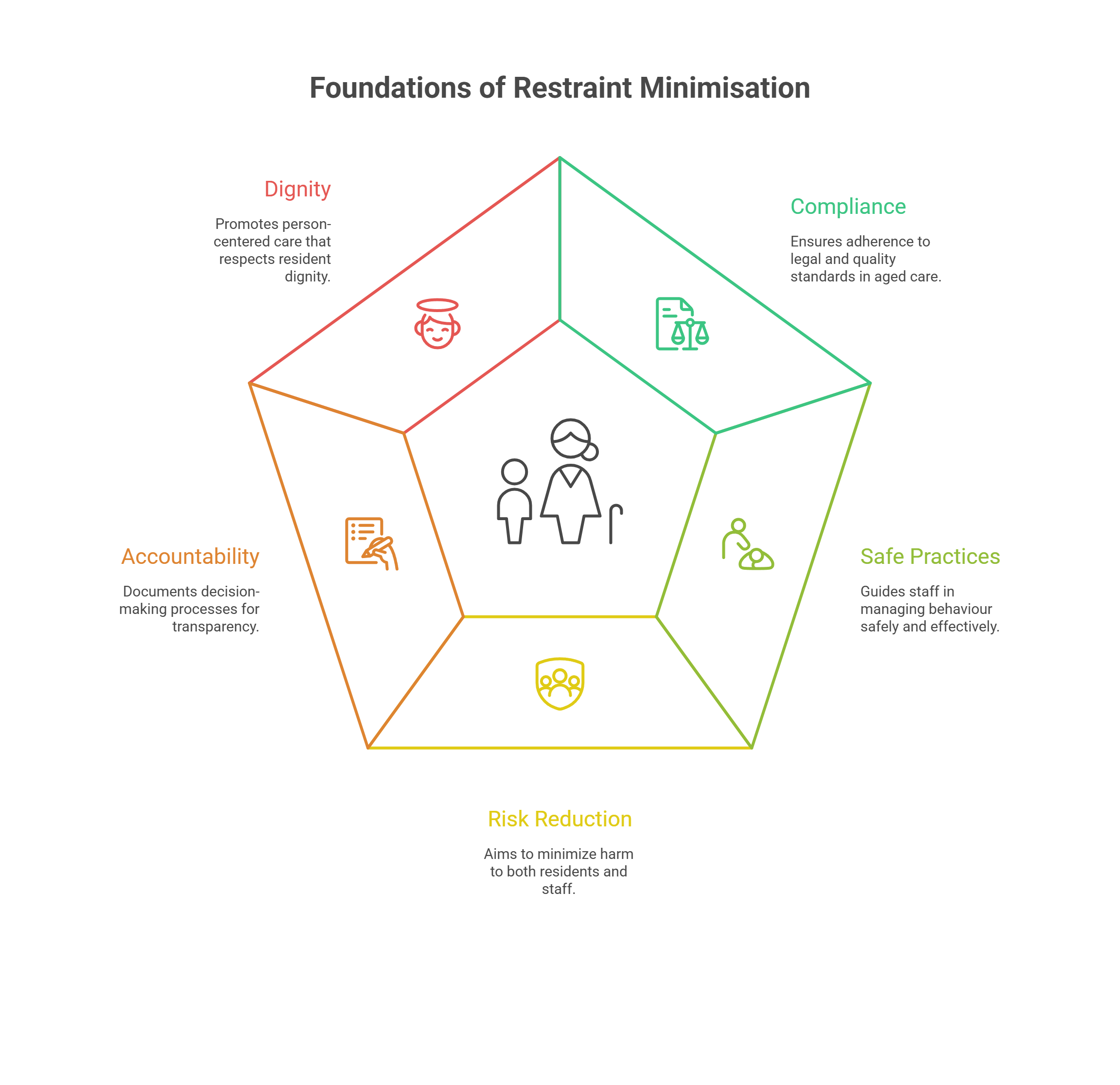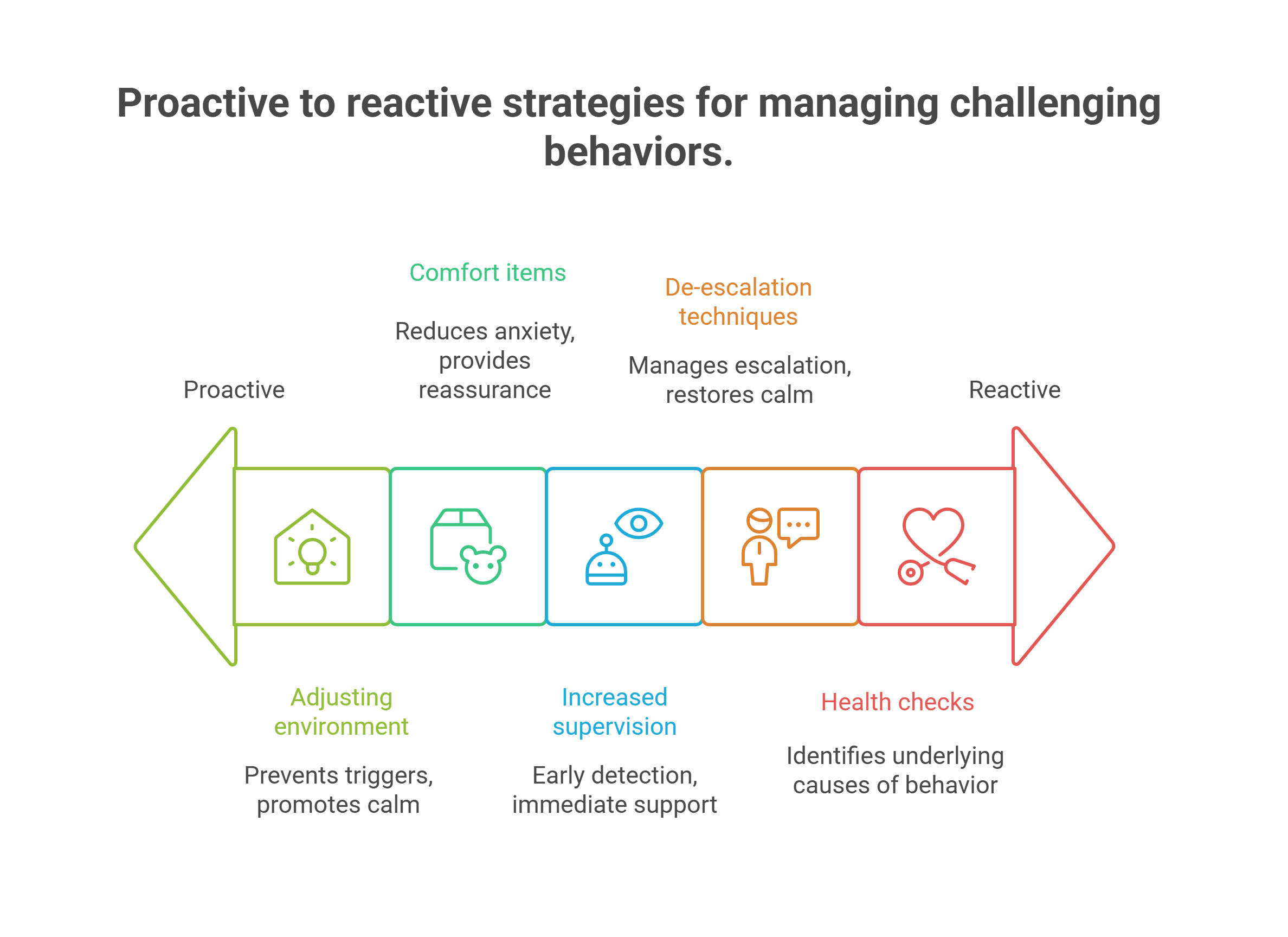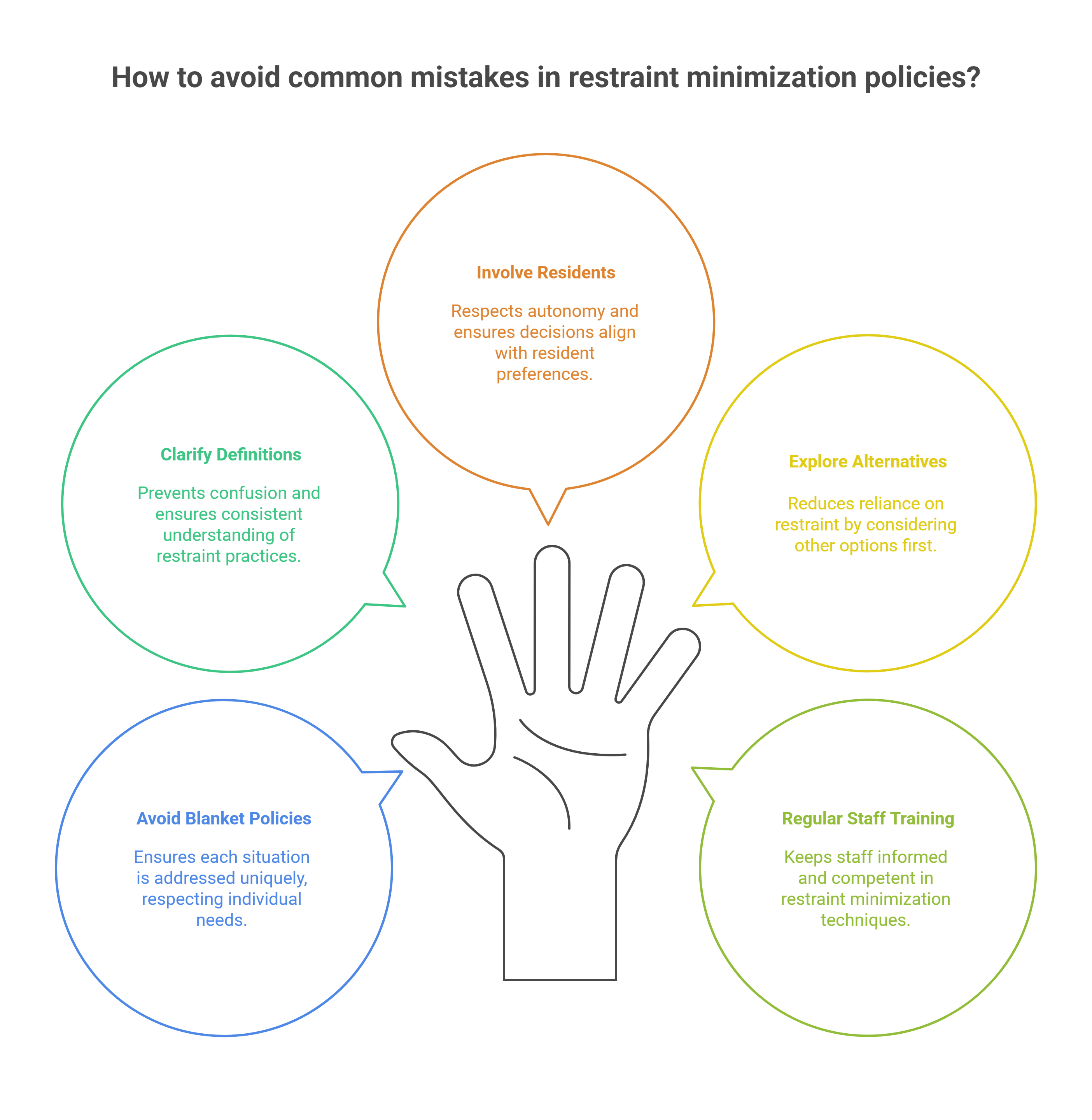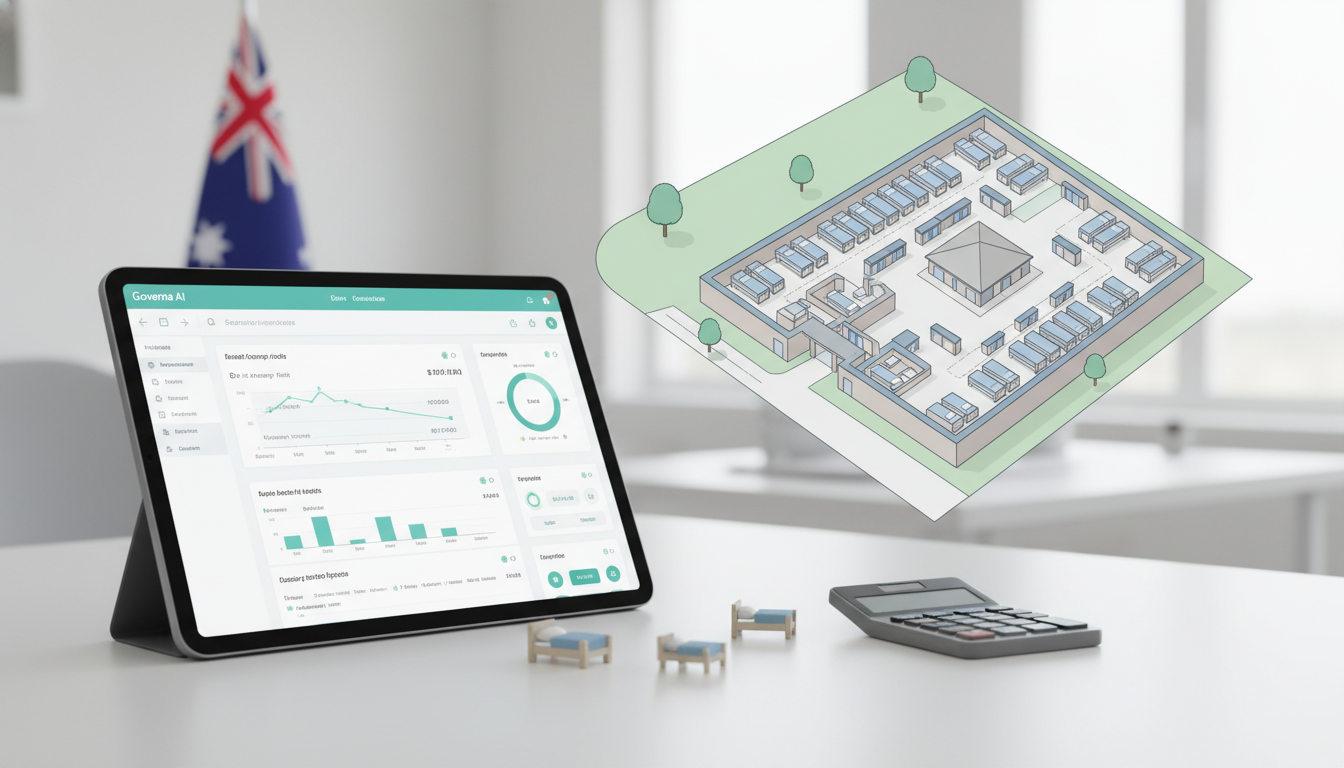There is no shortcut when it comes to safety and dignity. When someone trusts you with their care, especially in aged care, they expect you to look out for their wellbeing—physically, emotionally and socially. A restraint minimisation policy helps you do just that.
If you are an aged care provider, healthcare administrator or compliance officer, you know that restrictive practices come with serious responsibilities. Writing a clear, lawful and person-centred restraint minimisation policy is one of the best ways to guide staff, support residents and meet compliance standards in Australia.
Let us walk through how you can write one that ticks all the right boxes—with a little help from Governa AI and its aged care policy templates.
What Is Restraint Minimisation in Aged Care?
Restraint minimisation refers to reducing or avoiding the use of restrictive practices when caring for people in aged care. This includes both physical and chemical restraints, such as belts, bedrails, or medications given to control behaviour.
The goal is to protect residents without taking away their independence or personal freedom. You are not just managing risks—you are helping someone live a meaningful life.
Why You Need a Restraint Minimisation Policy
You are not writing this policy for the sake of paperwork. This document helps you:
- Comply with Australian aged care legislation and quality standards
- Guide staff in safe behaviour management practices
- Reduce the risk of harm to residents and staff
- Document decision-making and accountability
- Promote dignity and person-centred care
By clearly outlining when, why and how restraint might be considered—and more importantly, how it can be avoided—you create a safer, fairer and more respectful care environment.

Who Should Be Involved in Writing It
Writing this policy is not a one-person job. It is best done with input from:
- Managers and senior nurses
- Clinical governance teams
- Behavioural specialists or psychologists
- Workers with hands-on care experience
- Family representatives (where appropriate)
If that sounds like a lot to juggle, do not worry. Governa AI’s ready-to-go policy templates can give you a strong starting point, and then you tailor it to your service.
Key Parts of a Restraint Minimisation Policy
Now let us get down to brass tacks. Here is what your policy should include.
1. Purpose and Scope
Start by explaining what the policy is for. Make it clear that the purpose is to prevent or reduce the use of restraint, and when necessary, make sure it is safe, legal and respectful.
Mention who the policy applies to—staff, volunteers, contractors and anyone else delivering care in your facility.
2. Definitions of Restraint and Restrictive Practices
Use simple, plain language. Include clear definitions of:
- Physical restraint (e.g. bedrails, belts, holding someone down)
- Chemical restraint (e.g. sedatives used to control behaviour)
- Environmental restraint (e.g. locking doors, removing mobility aids)
- Seclusion (e.g. isolating someone from others)
Everyone must be on the same page about what counts as restraint. There is no room for confusion here.
3. Legal and Regulatory Framework
Your policy must refer to relevant Australian laws and standards. This includes:
- Aged Care Quality Standards
- Quality of Care Principles 2014 (as amended)
- Charter of Aged Care Rights
- State or territory laws on guardianship, consent and mental health
You do not have to quote legal jargon—just state the rules that apply, and explain your service’s legal obligations.
4. Guiding Principles
This section is about your values. Spell out that your approach is:
- Person-centred
- Rights-based
- Focused on safety and dignity
- Supportive of independence and choice
Let staff know that restraint is always the last resort, not the first option.
5. Alternatives to Restraint
No one likes to feel trapped. A good policy helps staff understand what they can do instead of restraint. Give practical alternatives, such as:
- Adjusting the environment (lighting, furniture, noise)
- Offering comfort items or calming activities
- Increased supervision or 1:1 engagement
- Behavioural support and de-escalation techniques
- Health checks (pain, hunger, thirst, infections)
These are not just fluffy suggestions—they can make a world of difference for someone who is confused or distressed.

6. Assessment and Decision-Making Process
If restraint must be used, your policy needs a strict step-by-step process.
- Conduct a risk assessment to identify why the person is at risk
- Try all alternatives before moving to restraint
- Involve the person, their family or legal representative
- Seek informed consent, unless it is an emergency
- Document the decision and justification clearly
Use flowcharts or checklists if it helps your team follow the process more easily.
7. Authorisation and Consent
Explain who can approve the use of restraint. This may differ depending on whether it is an emergency or not. Include:
- Consent requirements under law
- Role of substitute decision-makers
- How to document consent and refusal
Remember, using restraint without proper consent can land your organisation in hot water—so spell it out clearly.
8. Monitoring and Review
Once restraint is used, staff must:
- Check on the person regularly
- Record everything—duration, observations, outcome
- Stop the restraint as soon as possible
- Review the incident to see what could be done differently next time
Monitoring is not about ticking boxes. It is about keeping people safe and making sure restraint is never used longer than needed.
9. Training and Education
You cannot expect staff to follow a policy they do not understand. Outline:
- Who needs training (hint: everyone)
- What the training covers (e.g. behaviour support, de-escalation, legal rights)
- How often training should happen
- How you assess competency
Governa AI’s policy tools are built to support learning and implementation—because policies only work when people know how to use them.
10. Reporting and Incident Management
When restraint is used, it must be reported—internally and sometimes to the Aged Care Quality and Safety Commission. Make sure your policy includes:
- How and when to report
- What to document
- Who reviews the incident
- How families are informed
Use clear language. You do not want anyone hesitating to report out of fear or confusion.
Avoid These Common Mistakes
Here are a few potholes to watch out for:
- Blanket policies that treat every situation the same
- Missing definitions or confusing language
- Failing to involve the resident or their representative
- Skipping the alternatives and going straight to restraint
- Not training staff regularly
You can save yourself a lot of time and stress by starting with a solid aged care policy template from Governa AI.

Your Next Step
Writing a restraint minimisation policy does not have to be overwhelming. With the right structure, input from your team, and support from Governa AI, you can build a policy that protects everyone—residents, staff and your service.
Think of it as putting up clear signposts for your team. When people know where the boundaries are, they can do their job with more confidence and care.
Ready to put pen to paper? Start with a strong foundation and use Governa AI’s aged care policy templates to help guide your work.










